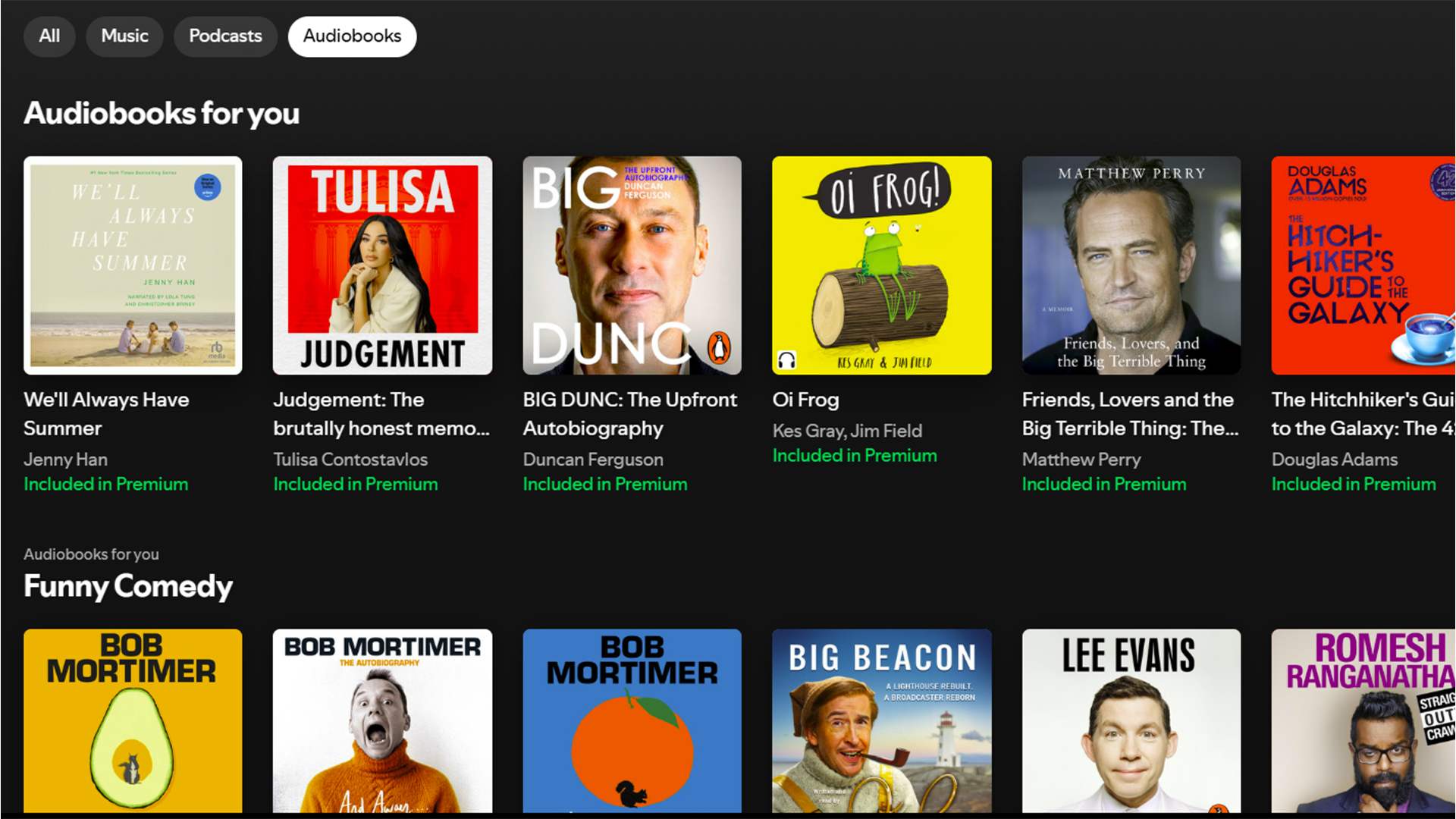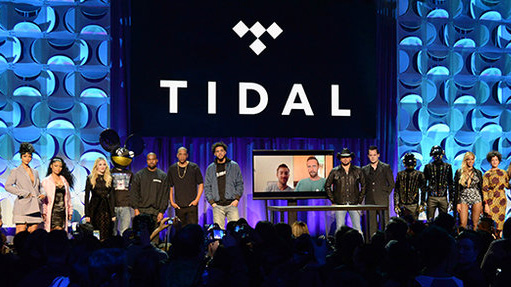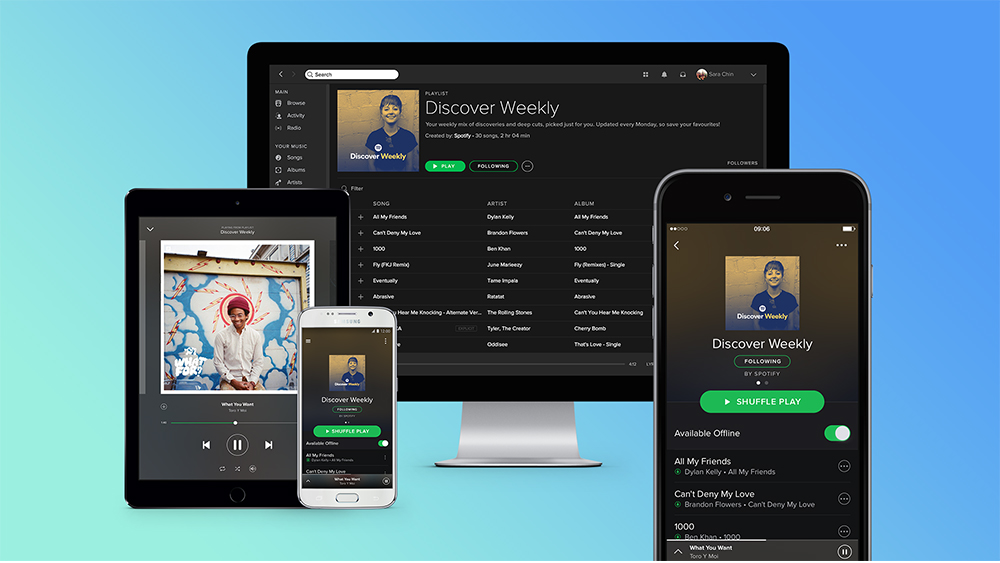Tidal vs Spotify: which streaming service is best for you?
The streaming world's audiophile and mainstream services of choice go head to head

Having won our Award for Best Music Streaming Service for a phenomenal 10 years in a row, Tidal is a force to be reckoned with. But despite offering an extensive catalogue of hi-res music across all manner of devices, it's not the most popular service of its kind. That honour goes to Spotify.
As the only major service to still have a free tier, Spotify is undeniably mainstream. But the differences between it and Tidal have shrunk in recent years. Spotify's prices have crept up to overtake Tidal, while Tidal's catalogue has grown to overtake Spotify's.
But perhaps more significantly, Spotify has finally launched hi-res streaming. It's not the same quality as Tidal's, but it is a lot better than Spotify's previous offering.
So which service is best for you? It all depends on your priorities, budget, devices and preferences. We've compared both services below so you can make an informed choice.
- Read our Spotify review
- Read our Tidal review
Tidal vs Spotify: pricing

If you're on a tight budget and simply want unlimited music playback for as small a monthly fee as possible, go for Spotify, as it offers a free subscription plan. You'll have to bear some (fairly annoying) adverts, though, and audio quality is limited to a maximum of 160kbps. Still, it's free.
And it's not as bad as it used to be. As of September 2025, you can search for specific songs to listen to, and play any song that you find while browsing or that's sent to you by a friend.
If you are willing to pay, you'll find plenty to like about Spotify Premium. Like hi-res music, which came to the service in September 2025 under the name Spotify Lossless (though it was eight years late). This brings audio in up to 24-bit/44.1kHz in FLAC across "nearly every song" in Spotify's extensive catalogue. That is higher than CD quality (16-bit/44.1kHz), although it's not as high quality as rival services' hi-res offerings (Tidal included).
The latest hi-fi, home cinema and tech news, reviews, buying advice and deals, direct to your inbox.
If a track isn't available in Lossless, it will be in 320kbps, which was previously Spotify Premium's standard quality.
Spotify Premium also has more features than the free tier, like offline listening and a blissful lack of ads. It costs £11.99 / $11.99 / AU$15.99 a month.
You can share a Spotify Duo Premium account with another person for £17.99 / $16.99 / AU$22.99 a month, or with up to five other people on a Family Premium account for £21.99 / $19.99 / AU$27.99 a month. Back in 2022, a Family account cost £16.99 / $15.99 / AU$17.95 , so the price has really risen recently.
Tidal no longer has a free tier, but it does offer a 30-day free trial. The tiers cost £10.99 / $10.99 / AU$12.99 per month for an Individual subscription, or £16.99 / $16.99 / AU$19.99 per month for a Family subscription for up to six people. Tidal also has a DJ Extension optional add-on for £9 / $9 / AU$9 per month.
Both services have student tiers too – Spotify's is £5.99 / $5.99 / AU$7.99 and Tidal's £5.49 / $5.49 / AU$5.99 per month.
Tidal offers 192kHz hi-res streaming via FLAC across all its tiers, along with Dolby Atmos Music and Sony 360 Audio tracks. It has undergone some changes in recent years, simplifying its pricing structure and ditching MQA for the FLAC format. But largely these have been for the better – certain features used to be locked behind a pricier 'HiFi Plus' tier, but that's no longer the case. And its base tier is actually cheaper than Spotify Premium!
** Winner: Spotify for free, Tidal for value **
Tidal vs Spotify: catalogue

Given that Spotify launched six years before Tidal, you might think it would have the bigger music library. Not so. Tidal actually claims to have more tracks than Spotify – over 110 million, to Spotify's claimed over 100 million.
But that's only half the story. Spotify says "nearly every song" in its catalogue is available in its lossless quality. As of August 2023, Tidal said it had over 6 million tracks available as hi-res FLAC streams, with all of its catalogue available in up to CD quality (16-bit/44.1 kHz). So while Tidal does have higher peak sound quality than Spotify, Spotify has more hi-res tracks in its catalogue.
Tidal's catalogue is bolstered by tracks mixed in immersive audio technologies Dolby Atmos Music and 360 Reality Audio. While Spotify doesn't support these formats, it offers millions of podcasts from some big names, many of which it has exclusive rights to.
Of the two services, Tidal is the more artist-friendly (which was one of its key selling points when it launched), and so is less likely to see big names pull their music from it in a fit over royalties or the site's supposed politics. Whereas Neil Young, Joni Mitchell and Taylor Swift have all done so in the past with Spotify (albeit usually temporarily).
Tidal is also more likely to carry exclusives, even if only for a short time. Jay-Z, Beyonce and Rihanna have all had albums exclusively available on the service, again albeit for a short time before they're available elsewhere.
Either way, all music streaming services will have some gaps in their library, so it's best to check your favourite artists are present before you sign up. Generally, though, both Spotify and Tidal's libraries are exemplary.
** Winner: draw **
Tidal vs Spotify: device support

Both services are available on a number of platforms: there are web players and desktop support for PC and Mac, plus Android and iOS apps. Both support Google Chromecast and Apple AirPlay 2, making it easier to fire your tunes around the home, and both also tick the in-car audio boxes, supporting Apple CarPlay and Android Auto.
Spotify once had the considerable advantage of Spotify Connect, which lets premium subscribers stream directly to speakers, TVs or systems. It’s become a familiar feature in many hi-fi and AV products – including Sonos speakers – and is a big draw for those interested in bringing streaming into their existing system.
But Tidal has now hit back with its own feature, named Tidal Connect, which also allows the direct streaming of songs to compatible hardware within the app but also supports the casting of Dolby Atmos files. It isn't as widespread in the mass consumer electronics market, though many new hi-fi products do tend to launch with it these days.
Tidal's app is also part of several networked hi-fi products’ streaming offerings, including Sonos, Bluesound and Denon Heos kit, Linn, McIntosh, Naim and Cyrus players.
** Winner: draw **
Tidal vs Spotify: music discovery

Spotify's discovery tools have long been one of its best features. Its hugely popular "Discover Weekly" feature uses AI and machine learning to generate a playlist of 30 songs that are relevant to your listening habits. It's impressively accurate.
On Fridays, Spotify sends out a two-hour Release Radar playlist containing brand-new music and remixes. The more you listen, the better the recommendations match your tastes. Factor in the mobile-only Daily Mix (five genre-specific playlists) and the Spotify Wrapped playlist that always trends big at the end of the year, and it's fair to say that Spotify rules the roost when it comes to music discovery.
Tidal's music discovery features are getting more up to Spotify's speed, though, with similar AI-based playlists such as My Daily Discovery, My Mix(es) and My New Arrivals formed from listening habits. Tidal Rising promotes interesting up-and-coming artists too, and Track Radio will bring you similar songs to the one you choose to start with.
Due to its roots, Tidal's Home interface was for a long time predominantly hip-hop and rap dominated, but it now features a much broader spread of genres.
** Winner: Spotify **
Tidal vs Spotify: sound quality

For a long time, this was no contest. Tidal offered hi-res tracks, and Spotify didn't. End of story. But now that Spotify has finally got into the hi-res game, how does it fare against the market leader?
It still loses. Because while Spotify's Lossless quality is much better than its 320kbps offering (clearer, more spacious, with more detail and less congestion), it's still inferior to Tidal.
Listening to the two services side by side, Tidal's streams sound clearer, fuller and more refined. And that's true even when the two services' bitrates are the same. Listen to Tidal's 24-bit/192kHz streams, and you can really tell the difference between them and Spotify's maximum quality of 24-bit/44.1kHz.
That's even more true if you listen using some of the best headphones or a decent system with enough transparency to allow the quality to shine through. Audiophiles, give Spotify a wide berth.
** Winner: Tidal **
Tidal vs Spotify: verdict
Spotify is the most recognisable name in music streaming and uniquely offers free (ad-supported) access to millions of songs around the world. It seems to constantly be finding new ways to improve the usability and increase the feature offering of its already comprehensive, intuitive and user-friendly service, to ensure it remains the world's most popular, most subscribed-to service.
For free listening, it's a no-brainer. But if you value sound quality above all else, Tidal should be your go-to service. Spotify does now offer hi-res streams, but they're not as hi-res as Tidal's, and even with the same bitrates, Tidal's sound better.
There's a reason that Tidal has won the What Hi-Fi? music streaming Award for 10 years in a row. The fact that it's now cheaper than Spotify just seals the deal.
** Overall winner: Tidal **
MORE:
How to cancel Spotify Premium – and should you?
Hi-res music streaming services compared: which should you sign up for?
Also consider Apple Music

Becky is a hi-fi, AV and technology journalist, formerly the Managing Editor at What Hi-Fi? and Editor of Australian Hi-Fi and Audio Esoterica magazines. With over twelve years of journalism experience in the hi-fi industry, she has reviewed all manner of audio gear, from budget amplifiers to high-end speakers, and particularly specialises in headphones and head-fi devices.
In her spare time, Becky can often be found running, watching Liverpool FC and horror movies, and hunting for gluten-free cake.
You must confirm your public display name before commenting
Please logout and then login again, you will then be prompted to enter your display name.
